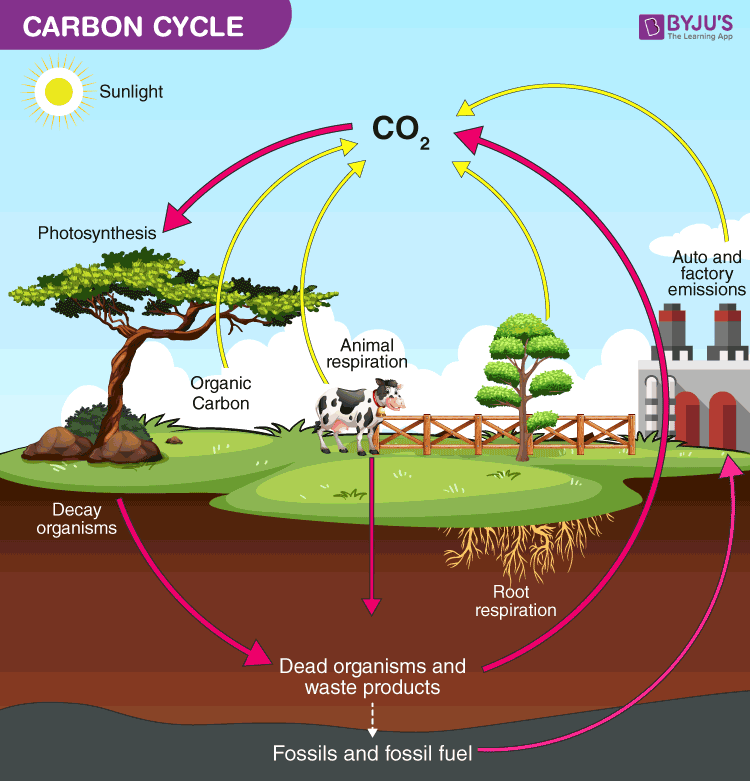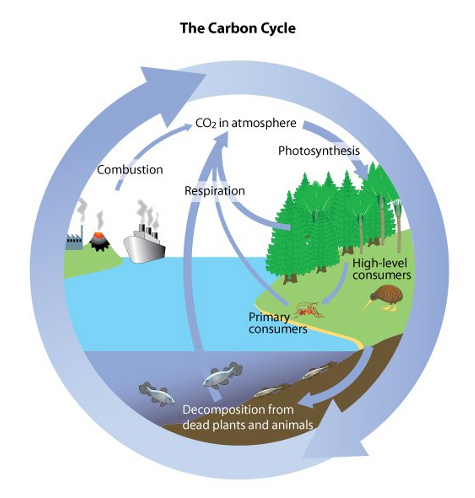


Processes such as erosion release this carbon back into the atmosphere very slowly, while volcanic activity can release it very quickly. When these organisms died, slow geologic processes trapped their carbon and transformed it into these natural resources. Rocks like limestone and fossil fuels like coal and oil are storage reservoirs that contain carbon from plants and animals that lived millions of years ago. Two-way carbon exchange can occur quickly between the ocean’s surface waters and the atmosphere, but carbon may be stored for centuries at the deepest ocean depths. The ocean plays a critical role in carbon storage, as it holds about 50 times more carbon than the atmosphere. The circulation of carbon on earth in which atmospheric carbon dioxide is converted to organic nutrients through photosynthesis and. Respiration, excretion, and decomposition release the carbon back into the atmosphere or soil, continuing the cycle. Animals that eat plants digest the sugar molecules to get energy for their bodies. They use energy from the sun to chemically combine carbon dioxide with hydrogen and oxygen from water to create sugar molecules. For example, in the food chain, plants move carbon from the atmosphere into the biosphere through photosynthesis. Conservation Service Corp Act Direct Hiring AuthorityĬarbon moves from one storage reservoir to another through a variety of mechanisms.The present atmospheric CO 2 concentration. It has risen continuously since then, reaching 367 ppm in 1999. Information for NOAA student opportunity alumni The Carbon Cycle and Atmospheric Carbon Dioxide 185 Executive Summary CO 2 concentration trends and budgets Before the Industrial Era, circa 1750, atmospheric carbon dioxide (CO 2) concentration was 280 10 ppm for several thousand years.There are arrows pointing from air sea gas exchange, human emissions, and a volcano pointing towards carbon dioxide in atmosphere. At the top of the drawing above the clouds there is a label of carbon dioxide in atmosphere. About the education resource collections On average, 10 13 to 10 14 grams (10100 million metric tons) of carbon move through the slow carbon cycle every year. A drawing of mountains, rocks and the ocean titled the carbon cycle.NOAA Sea to Sky: Education resource database.

NOAA in your backyard: Education contacts near you.


 0 kommentar(er)
0 kommentar(er)
